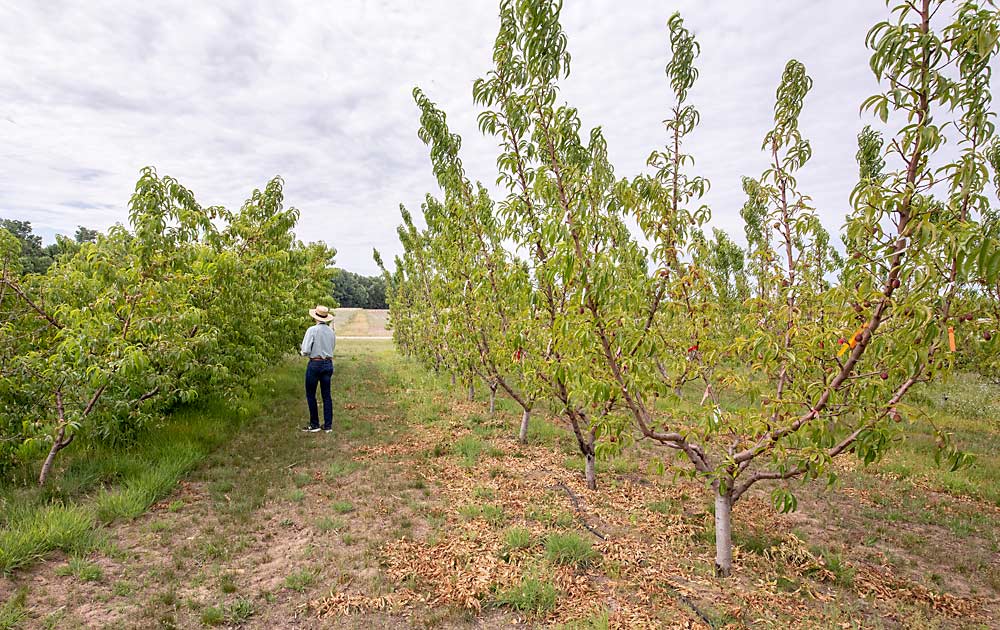
Peach production might be poised for a revolution, but growers have to buy in first.
Michigan State University tree fruit physiologist Greg Lang and other researchers see an opportunity for peach production to make a rapid jump toward planar canopies and tighter, more efficient plantings, building on lessons learned from apples and cherries.
There’s plenty of interest in higher-density plantings from peach growers, but most aren’t quite ready to make the jump. Only a small number are experimenting with smaller trees and planar architectures right now, even in large peach states like California, said MSU peach breeder Bill Shane.
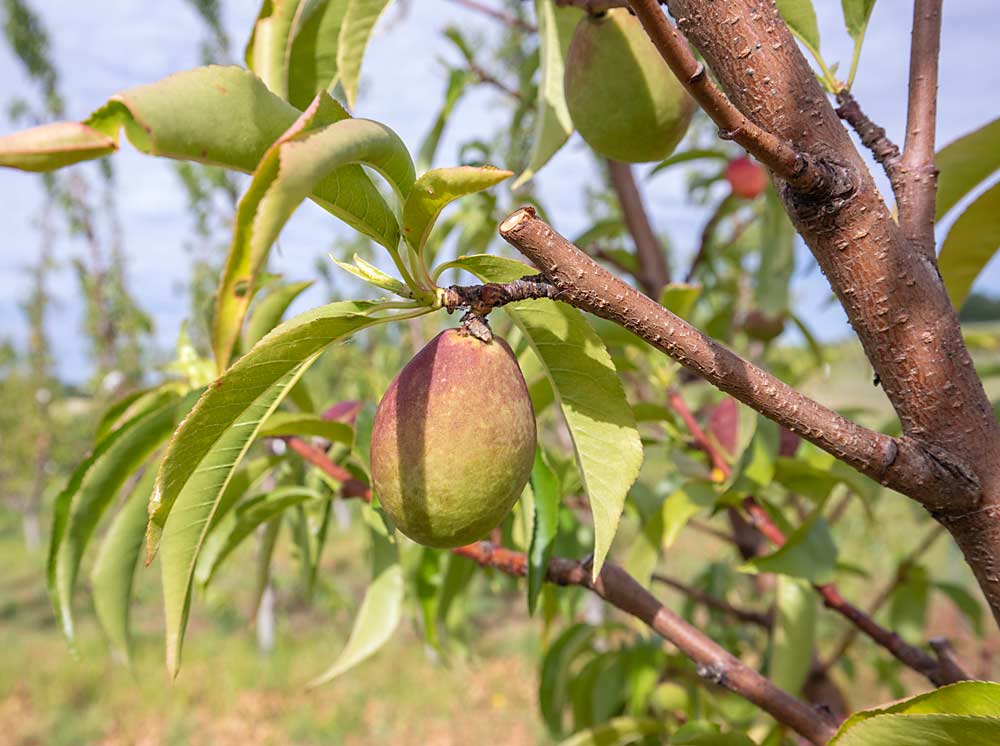
Lang said the combination of dwarfing rootstocks and planar training systems has moved sweet cherries forward tremendously in the past 25 years, nearly doubling total production and greatly improving per-acre productivity. But in the same period, U.S. peach and nectarine production has been halved. So has acreage — meaning per-acre productivity has not improved one bit in the past quarter-century.
To improve productivity, Lang envisions a total redesign of peach tree architecture. Instead of the typical open vase system with multiple leaders on Guardian or Bailey rootstocks, there will be smaller, more efficient trees with easier-to-manage, two-dimensional canopies that are adaptable to mechanization.
“I’m telling growers to plant the orchard that will still be competitive 20 years from now,” he said.
Lang isn’t the only scientist trying to reshape peach production.
In Pennsylvania, Penn State University pomologist Jim Schupp is evaluating the performance of size-controlling rootstocks and tighter tree spacings. He said the Rootpac, MP-29 and Controller rootstocks all show promise for higher-density peach plantings. He also discovered that spacing has just as much effect on peach tree vigor as rootstock. The tighter the planting, the greater the root competition and the smaller the tree.
Peach size and yield per tree decline with increasing density, but yield per acre goes up because of the greater number of trees, Schupp said.
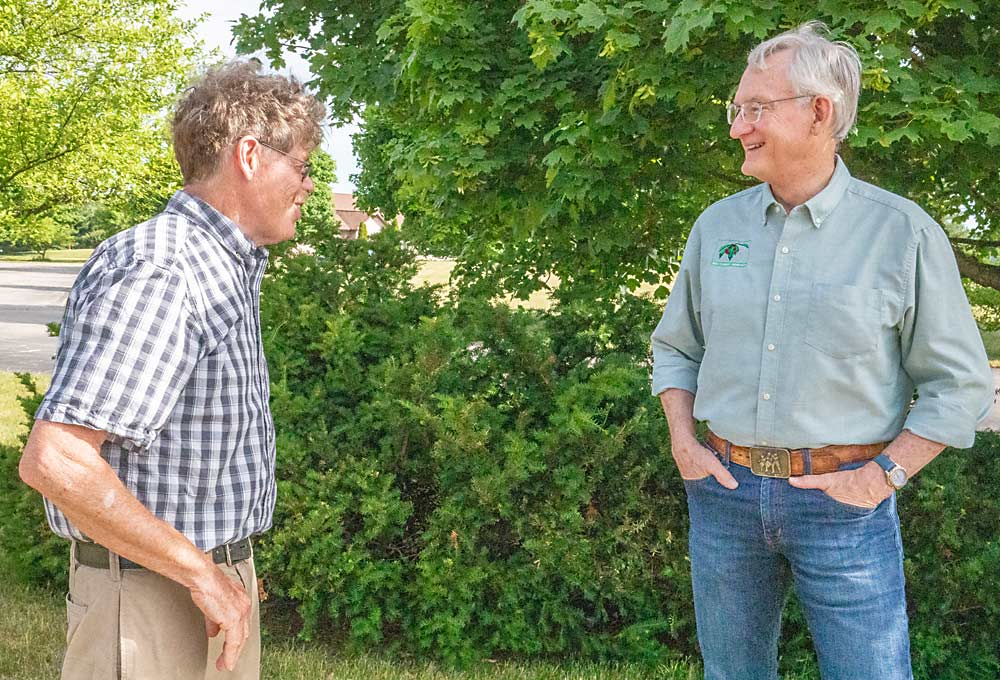
MSU’s Shane has also been trialing size-controlling rootstocks for peaches, including the Controller series and MP-29. He and Lang are studying different pruning methods, seeking to find the right balance of fruit, wood and leaf area for two-dimensional canopies.
Michigan growers are learning along with them.
In 2015, Chuck and Kyle Rasch decided to make the jump toward higher density — on a small scale. The father and son planted a 3-acre block of peach trees trained to the Upright Fruiting Offshoots, or UFO, system at Windy Ridge Orchards in Conklin, Michigan.
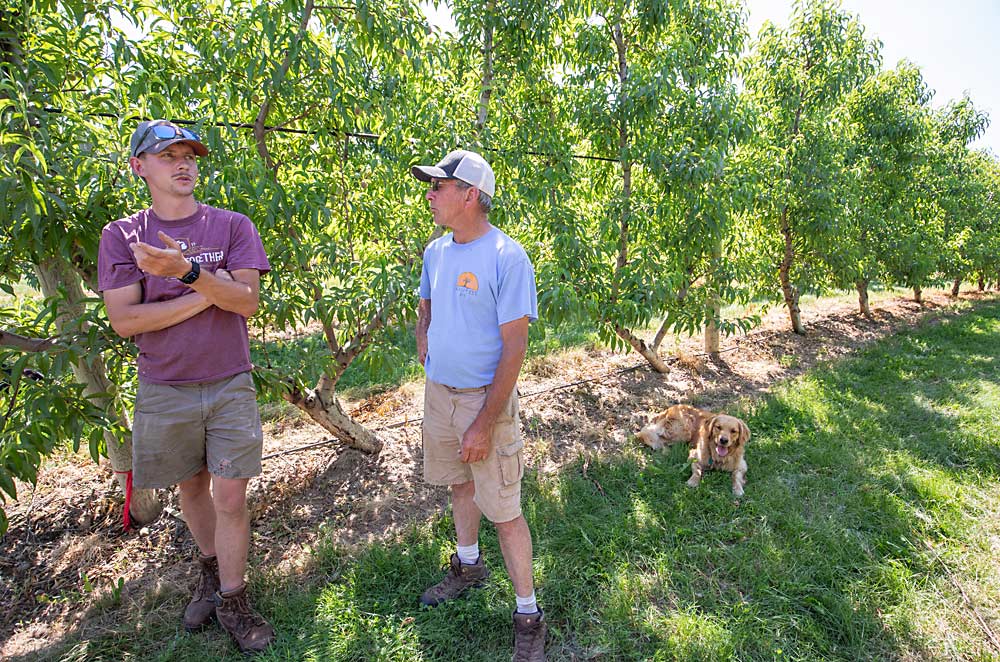
The Rasches saw some of Lang’s UFO trials in peaches and cherries (Lang was one of the researchers who developed UFO), and they liked how the system encouraged the peach tree’s tendency for upright growth while slowing down its vigor with multiple leaders. Their UFO peach trees, spaced 9 by 12 feet on Bailey rootstock, were planted at an angle, each with three or four leaders growing upward.
Kyle said the UFO block is yielding well, 450 to 500 bushels per acre, but its management isn’t quite as efficient as they’d originally hoped. They’re still struggling to overcome the peach tree’s tendency to continually push out new fruiting wood and shade out lower growing points. The canopies they’d hoped to keep a foot wide are closer to 2 or 3 feet wide, and the tops are about 10 feet high.
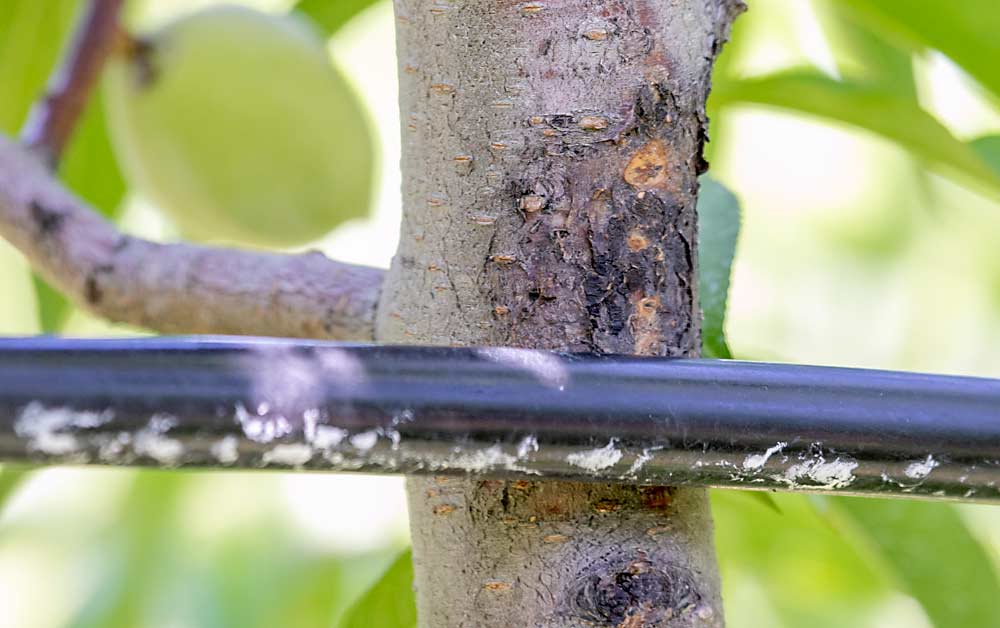
Their original goal was to manage the UFO block via platform, but the trees aren’t quite uniform enough, and their workers mostly use ladders, Kyle said.
Not far away from Windy Ridge, Rasch Family Orchards is working with V training systems, including in-row V, where tree scaffolds are angled within the row to create a planar fruiting wall. Grower Jake Rasch said fruit size is more uniform using in-row V, and it saves labor. The number of pickings has gone from eight or nine down to five or six.
—by Matt Milkovich

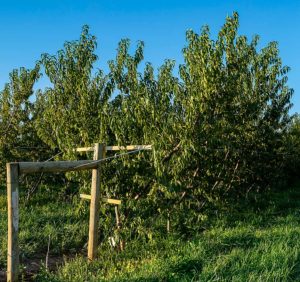





Leave A Comment